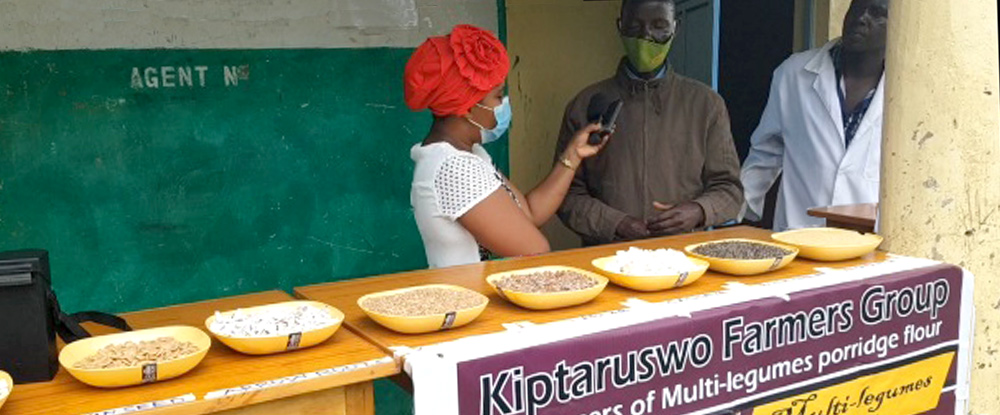
Multipurpose Legumes Project: Now and Looking Ahead
Published on:
March 15, 2021
Community of Practice:
The goal of the Multipurpose Legumes Project (MLP) is to meaningfully integrate legumes into western Kenya smallholder systems to improve system productivity. Doing this sustainably is quite challenging because legumes are vulnerable to a number of biotic and abiotic factors, including pests and diseases, soil acidity, and phosphorus deficiency. These are all common production constraints in the smallholder systems of western Kenya, and understanding them thoroughly, including their spatial distribution, is important for designing appropriate solutions.
MLP’s last phase (2018-2020) conducted a comprehensive biophysical characterization to establish the nature of the variability in soil health status. Through collaboration with the Soils Cross-Cutting Project, the Soil Toolkit was successfully used to help farmers understand soil health degradation during in-community, participatory soil-analysis workshops. Farmers could see for themselves their fields’ levels of soil health degradation, motivating them to work with researchers to find appropriate solutions.

A radio reporter interviews a farmer involved in legume value addition. Source: John Ojiem
The soil characterization enabled a more nuanced approach to improving soil health. Various agroecological intensification (AEI) options were successfully tested and matched to established contexts to improve efficiency and performance. The project worked with various farmer research networks (FRNs) to promote the use of the AEI strategies. The options included high-quality compost, biochar, legume biomass, and special blends of inorganic fertilizers to achieve sustainable improvement of soil health, suppress Striga hermonthica, and control soilborne diseases, particularly root rot. The FRNs used a dialogue education approach, helping farmers understand basic scientific principles of soil health management, participate effectively in co-creating solutions, and recognize the need to manage their soil to achieve a balance of short- and long-term benefits.
Another major achievement of MLP was the value addition of legumes to improve livelihoods. Additionally, three farmer groups were supported through research to optimize the nutritional quality of their porridge flour products, registration and training for successful passage through the Kenya Bureau of Standards, and product branding. The groups were also provided with milling machines.
Hopes for the New Phase
The next phase will build on the achievements of the last. Research will generate interventions that optimize legume performance in the target farming systems to further enhance AEI and improve productivity. By building the capacity of the FRNs, the project will facilitate a paradigm shift from extractive to regenerative resource management aimed at improving productivity while ensuring environmental conservation and sustainability. The emphasis will be on improving ecosystem nutrient recycling and optimizing soil physicochemical environment. To achieve this, the project intends to introduce a large selection of legume species and varieties in diverse farming systems in western Kenya. This will support a range of benefits, including an additional food source, enhanced soil fertility, better Striga control, more livestock fodder, and improved livelihoods. Drought-tolerant legumes will be introduced and evaluated for their ability to reduce the impact of climate change. AEI options that show promise in this new phase will later be scaled out in nuanced, context-specific circumstances.